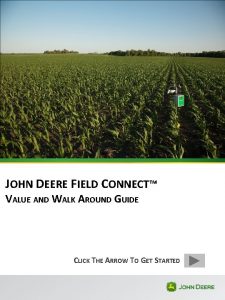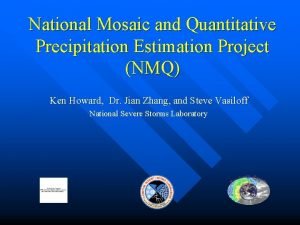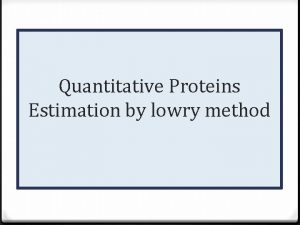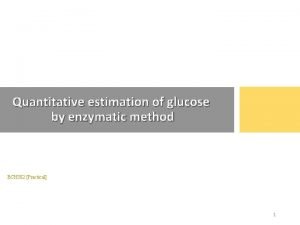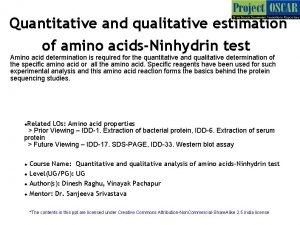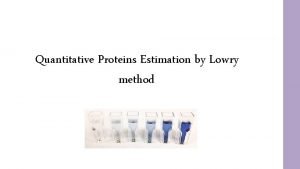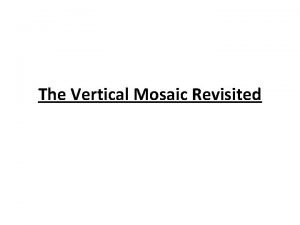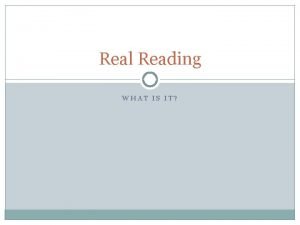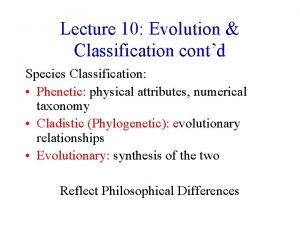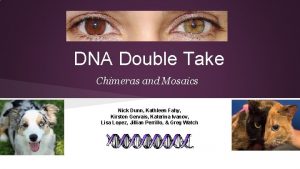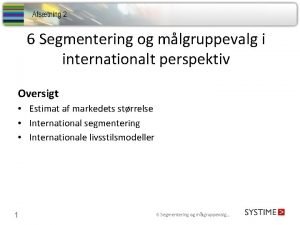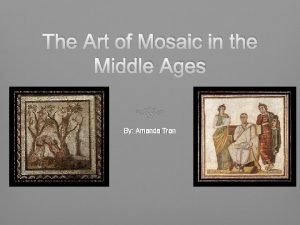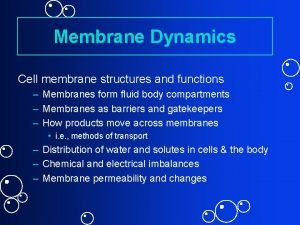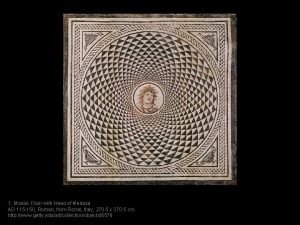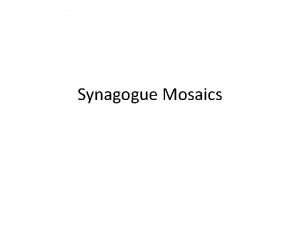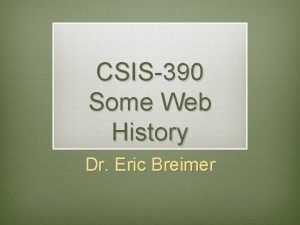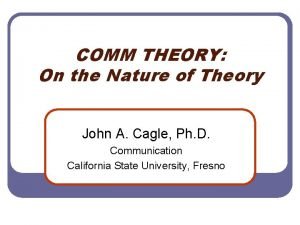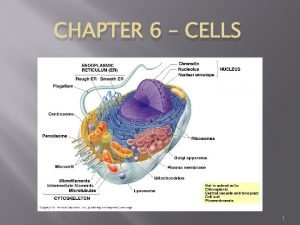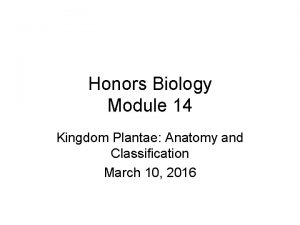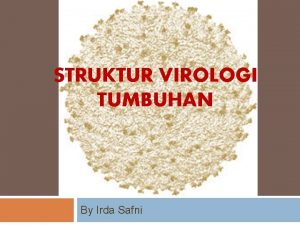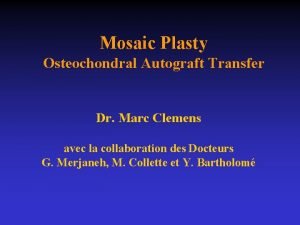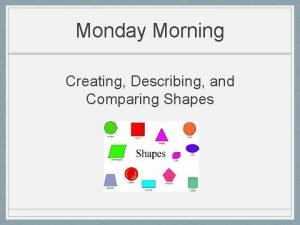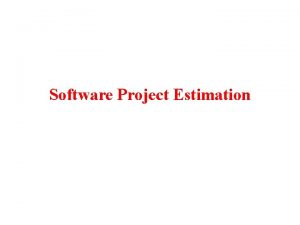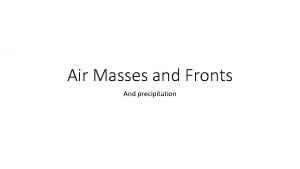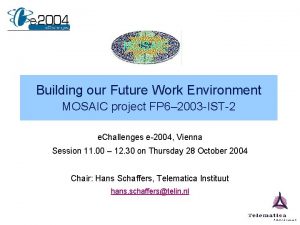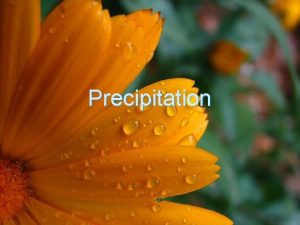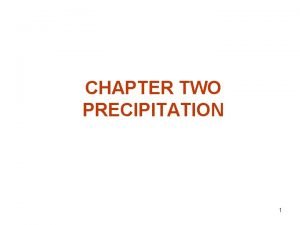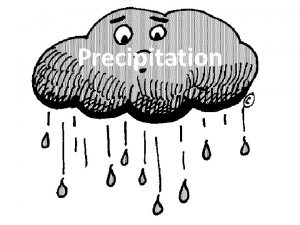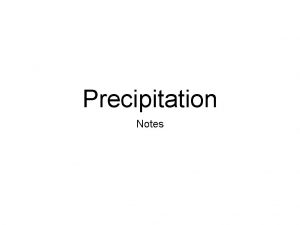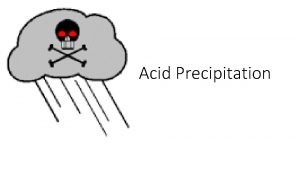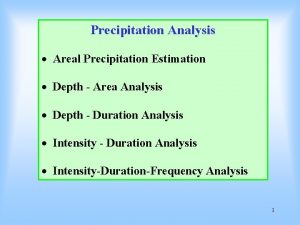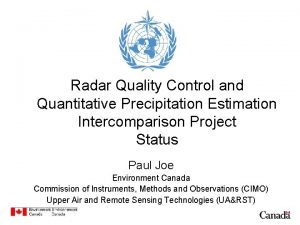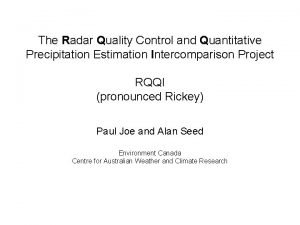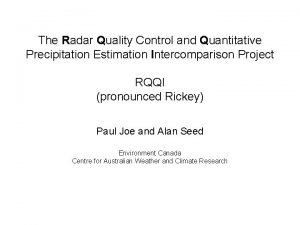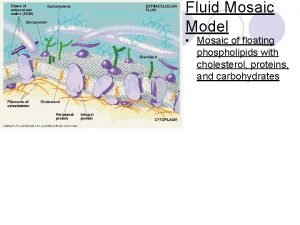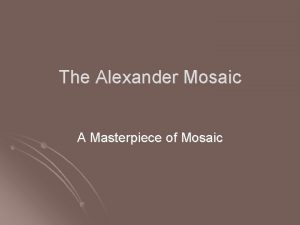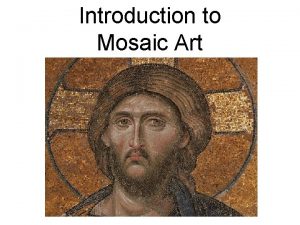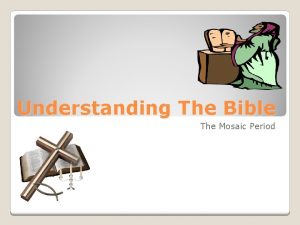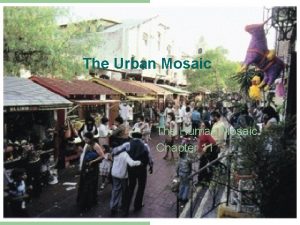National Mosaic and Quantitative Precipitation Estimation Project NMQ



































- Slides: 35

National Mosaic and Quantitative Precipitation Estimation Project (NMQ) Ken Howard, Dr. Jian Zhang, and Steve Vasiloff National Severe Storms Laboratory

Strategic Partnerships Federal Aviation Administration Convective Weather PDT Chuck Dempsey, Jason Wilhite and Dr. Robert Maddox SRP, Salt River Project, Tempe, AZ, USA Dr. Paul Chiou, Dr. Chia Rong Chen, and Dr. Pao-Liang Chang Central Weather Bureau, Taipei, Taiwan Weather Decision Technologies, Norman, Oklahoma, USA

Scientific Collaborators Mike Smith, George Smith, Feng Ding, Chandra Kondragunta, Jon Roe, and Gary Carter NWS, Office of Hydrological Development Dr. Marty Ralph and Dr. Dave Kingsmill NOAA, Environmental Technology Laboratory Andy Edman and Kevin Warner NWS, Western Region Headquarters Arthur Henkel California-Nevada RFC Dr. Thomas Graziano and Mary Mullusky NWS Office of Climate, Water, and Weather Services Steve Hunter USGS, Bureau of Reclamation Dr. Robert Kuligowski NOAA National Environmental Satellite, Data and Information Service Dr. Curtis Marshall NOAA National Center for Environmental Prediction

What is NMQ? n The National Mosaic and QPE (NMQ) project is a collaborative initiative between NSSL, FAA, NCEP and the NWS/Office of Hydrologic Development (OHD) and the NWS/Office of Climate, Water, and Weather Services (OCWWS) to address (among others) the pressing need for – high-resolution national 3 -D radar mosaics for atmospheric data assimilation and severe weather identification and prediction – multi sensor QPE and short term QPF for all seasons, regions, and terrains in support of operational hydrometeorological products and distributed hydro modeling – facilitating efficient and timely research to operations infusion of hydro meteorological applications and products

Objectives of NMQ n n Maintain a scientifically sound, physically realistic real-time system to develop and test techniques and methodologies for physically realistic high-resolution rendering of hydrometeorological and meteorological processes Create the infrastructure for community-wide research and development (R&D) of hydrometeorological applications in support of monitoring and prediction of freshwater resources in the U. S. across a wide range of space-time scales Through the NMQ infrastructure, facilitate community-wide collaborative R&D and research-to-operations (RTO) of new applications, techniques and approaches to precipitation estimation (QPE), short-range precipitation forecasting (QPF), and severe weather monitoring and prediction Establish a ‘real time’ CONUS 3 -D radar data base for model assimilation

NMQ System Network Location NMQ

NMQ_xrt Processing System Radar Data Sources Polar Processing Product Generation Verification Server WSR-88 D FAA TDWR LDM Mosaic Servers LDM Q 2 Servers Canadian Radar Network NIDS L 3 LDM FTP 60 cpu 18 TB NOAA Port External Data Ingest

NMQ_xrt Computational Tiles

NMQ_XRT CONUS 3 -D Mosaic Current 124+ Radars 1 km x 500 m 21 vertical levels 5 min updates cycle Fall 2005 135+ Radars 1 km x 200 m 31 vertical levels <5 min update cycle Summer 2006 155+ Radars 250 x 250 meter km x 131 vertical levels <5 min update cycle

NMQ_xrt Conus CREF

NMQ Vertical Levels

NMQ 2 D Mosaic C A B

Cross Sections from NMQ 3 -D Mosaic Dallas Hail Storm, 5/5/1995

Vertical Cross Section Loop (W-E)

Horizontal Cross Section Loop

Reflectivity QC § Noise filter § Remove speckles § Sunbeam filter § Remove sun strobe echoes § Vertical reflectivity gradient check § Remove AP and clear air echoes § Satellite mask § Remove AP, deep clear air echoes, and chaff

Noise Filter

Sunbeam Filter

AP and Clear Air (biological)

Bright-Band Identification (BBID) (Gourley and Calvert, 2003) n n BB info will impact choice of objective analysis methods BBID steps: – 3 -D Reflectivity Field – Find Layer of Higher Reflectivity – Vertical Reflectivity Gradient – Spatial/Temporal Continuity

3 -D Spherical to Cartesian Transformation (Zhang et al. 2003) o + No BB o o + BB o o No BB: Vertical linear interpolation o BB exists: Vertical and horizontal linear interpolation

Convective Case 1: RHI, 263° Raw Interpolated

Stratiform Case 2: RHI, 0° Raw Interpolated

Stratiform Case CAPPI at 2. 3 km Raw Interpolated

Distance Weighting CREF_KLOT Mosaic CREF

NMQ 2 D Products (QC’d, Un. Qc’d, VPR corrected) CREF n HREF n VIL n HIS n Echo top n Max hght n

NMQ 3 D Products (QC’d, Un. Qc’d, VPR corrected) BREF (31 levels) n 3 D CREF n Multi Sensor QPE n

Radar Only PCP (Dec. 11 - Jan. 1)

MS PCP (Dec. 11 - Jan. 1)

Snow/Rain Mix MS PCP (Dec. 11 - Jan. 1)




In Closing • NSSL has assembled the hardware, communication, and software infrastructure for the ‘real time’ creation and dissemination of high resolution 3 D radar reflectivity fields and products. • The NMQ project provides the foundation for the research and development towards high-resolution multisensor quantitative precipitation estimation (QPE) for all seasons, regions and terrains in support of hydrometeorological and hydrologic data assimilation and distributed hydro modeling. • The NMQ system is being developed as a NATIONAL community test bed for R&D and RTO of QPE, short-range QPF and severe weather science/applications. The NMQ system and products could potentially ‘feed’ LEADS and other Unidata community based applications. • NSSL seeks a collaboration with Unidata and Unidata partners towards the utilization and enhancement of the NMQ system as community educational and research/development system including the display and distribution of NMQ products.

Thank you!
 Nmq john deere
Nmq john deere Gravimetry steps
Gravimetry steps Co precipitation and post precipitation
Co precipitation and post precipitation National mosaic full resolution loop
National mosaic full resolution loop Quantitative estimation of protein by lowry method
Quantitative estimation of protein by lowry method Enzymatic methods for glucose determination
Enzymatic methods for glucose determination Quantitative estimation of amino acids by ninhydrin method
Quantitative estimation of amino acids by ninhydrin method Quantitative analysis of protein by lowry method
Quantitative analysis of protein by lowry method Metrics for project size estimation
Metrics for project size estimation Environmental resources in software engineering
Environmental resources in software engineering Vertical mosaic meaning
Vertical mosaic meaning Real reading salad
Real reading salad Mosaic plagiarism
Mosaic plagiarism Mosaic postcode analysis
Mosaic postcode analysis Dicots
Dicots Lydia fairchild
Lydia fairchild Livsstilsmodeller
Livsstilsmodeller Medieval period mosaic
Medieval period mosaic Tree of life apse mosaic
Tree of life apse mosaic Fluid mosaic model
Fluid mosaic model Mosaic floor with head of medusa
Mosaic floor with head of medusa The mosaic floor of the beth alpha synagogue
The mosaic floor of the beth alpha synagogue Triangle disease
Triangle disease Ano ang iyong masasabi sa posisyon ng daigdig
Ano ang iyong masasabi sa posisyon ng daigdig Mosaic first web browser
Mosaic first web browser Aulaclty meaning
Aulaclty meaning Davson danielli model vs fluid mosaic model
Davson danielli model vs fluid mosaic model Davson danielli model vs fluid mosaic model
Davson danielli model vs fluid mosaic model Mosaic plagiarism violation
Mosaic plagiarism violation Leaf mosaic arrangement
Leaf mosaic arrangement Tobacco mosaic virus
Tobacco mosaic virus Tv mosaic
Tv mosaic Icosahedral adalah
Icosahedral adalah Mosaic plasty
Mosaic plasty Van hiele mosaic puzzle
Van hiele mosaic puzzle Mosaic tile
Mosaic tile
